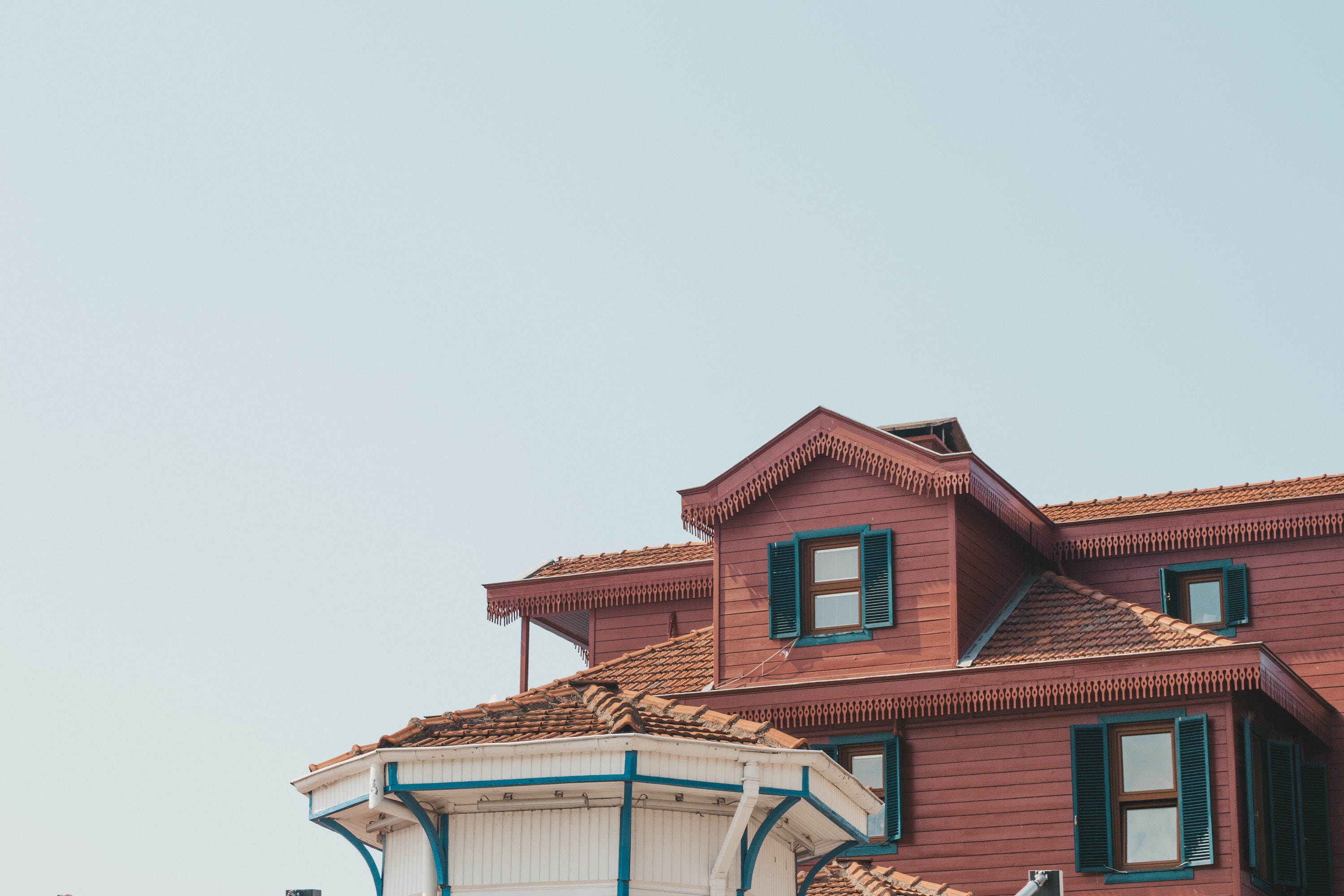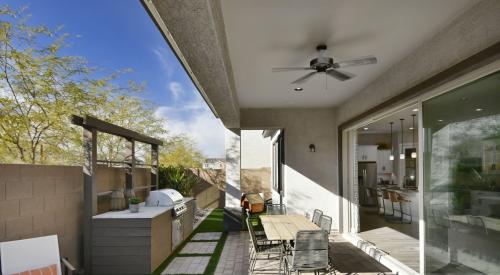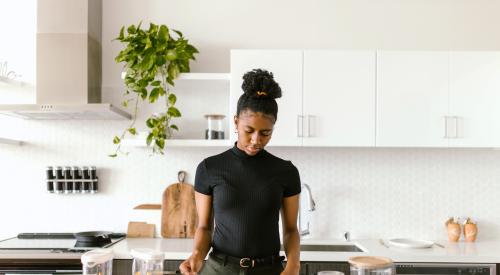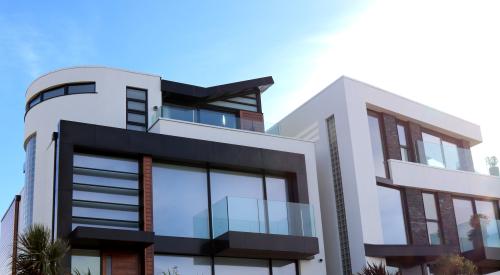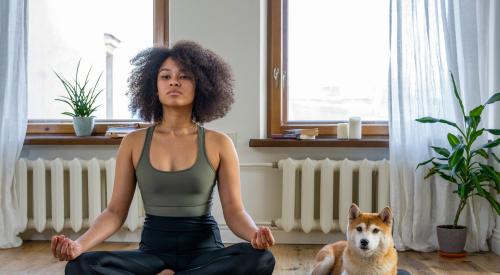The New Home Trends Institute (NHTI) by John Burns Real Estate Consulting regularly conducts surveys to glean the latest home design trends in the U.S. homebuilding industry. Rather than reach out to homebuyers, however, NHTI asked architects and designers themselves.
More than 300 residential architects, designers, and design-oriented builders responded to the survey. The complete findings were published by NHTI in its June 2021 Survey Insights Report: Future of Home Design. Here’s a recap of the findings:
CUTTING COSTS WITHOUT SACRIFICING DESIGN
According to some of the 300+ architectural designers surveyed by NHTI, cost/value is expected to be the number one influence driving design choices over the next three years.
Though there are many ways to trim costs on a residential project, NHTI finds that most designers start with three methods:
- Altering exterior materials
- Shrinking the square footage, and/or
- Adjusting the form/shape of the home.
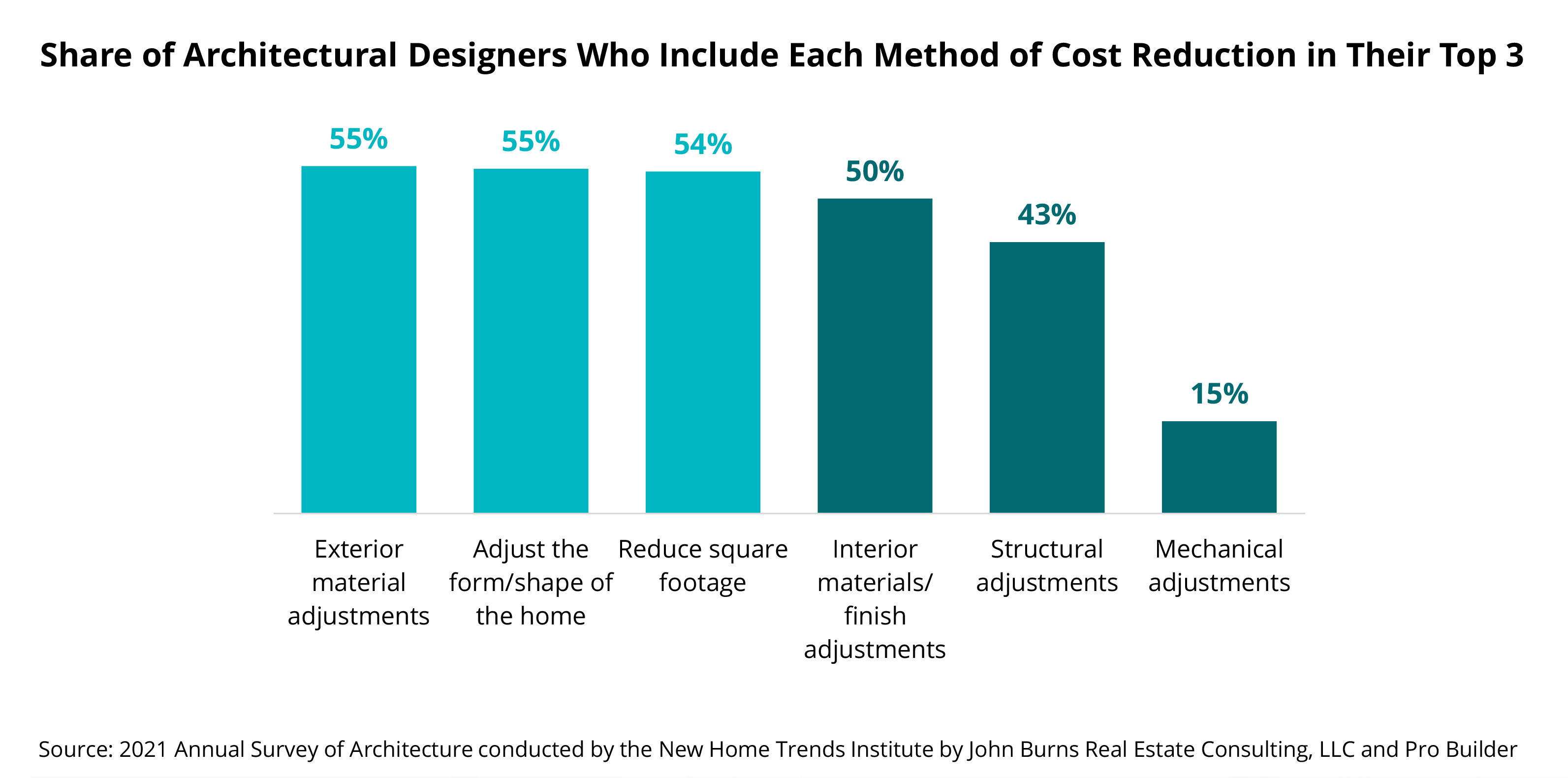
“As the architect, it is our job to leverage our experience and expertise to make recommendations on how and where to reduce cost without taking away from the architecture, aesthetic, and commitment to the community,” says Sarah Sindian, AIA, NCARB, Associate Principal with KTGY.
One big influence on architectural design decisions is sustainability strategies. While value/cost remains at the top of the list of drivers for design choices, energy efficiency choices follow right behind.
Seventy-eight percent of designers consider one or more sustainability strategies—such as passive home design or building envelope science—as a key driver in their designs. More than ever, these designers are eager to promote energy-efficient solutions to their clients, even if their clients aren’t looking that far ahead yet.
“[I’m excited about] the idea that every home in the country should have sustainable energy components as a part of it—same as we have hot water heaters, air conditioning units, furnaces for heat.” — Architectural Designer in Texas
THE STYLE AND MATERIALS THAT DOMINATE
Cost and value go beyond sustainability as well. Though most architects would prefer high-quality products at low-cost expenses, that dream can’t always come true.
Ceiling finishes, landscaping, lighting, textiles, and exterior living areas are places where architectural designers say that cost matters more than durability. However, most (82%) agree that aspects like lighting need to have the right “look and feel,” regardless of cost.
Interior flooring and wall paint is another case where the look and feel takes superiority over price. The survey indicates that saving cost on materials cannot come at the expense of interior design most of all.
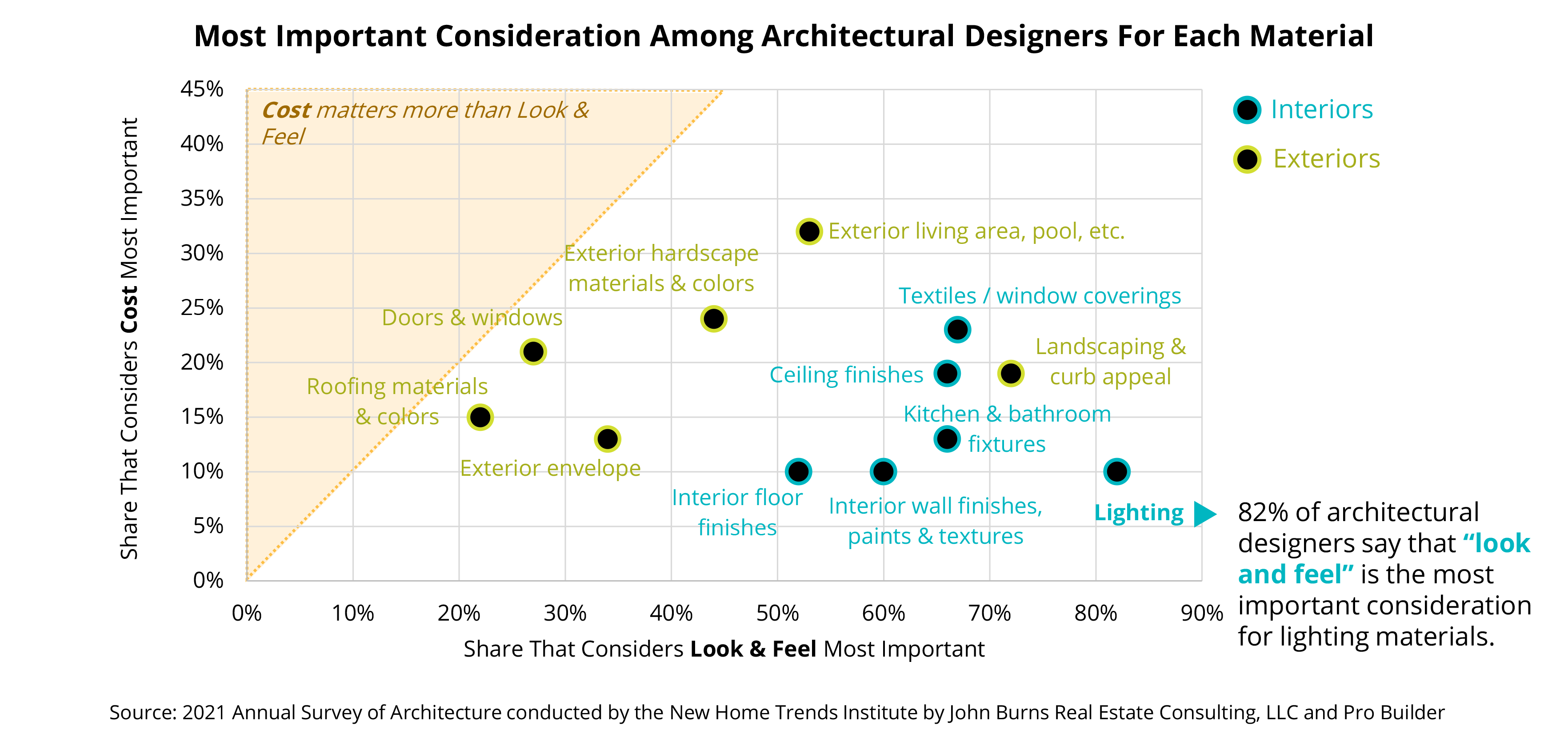
Additionally, as ranked by architectural designers, home interiors are skewing more modern over the next three years.
Contemporary home design tops the list with 79% of designers believing it will remain a top-five elevation style in the coming years. Farmhouse design is ranked second at 58%, followed closely by Craftsman (53%) and Mid-Century (48%).
Designers point again to “look and feel” as the deciding factor for their choice of exterior materials. In fact, one in four architectural designers tried at least one new external building material in 2020. After this consideration, they of course take durability and building envelope concerns into account.
As for favorite materials, some were specified by designers more frequently in 2020, compared to the previous year. Cementitious materials, vertical/board and batten, stone, and engineered wood top the list in this survey.
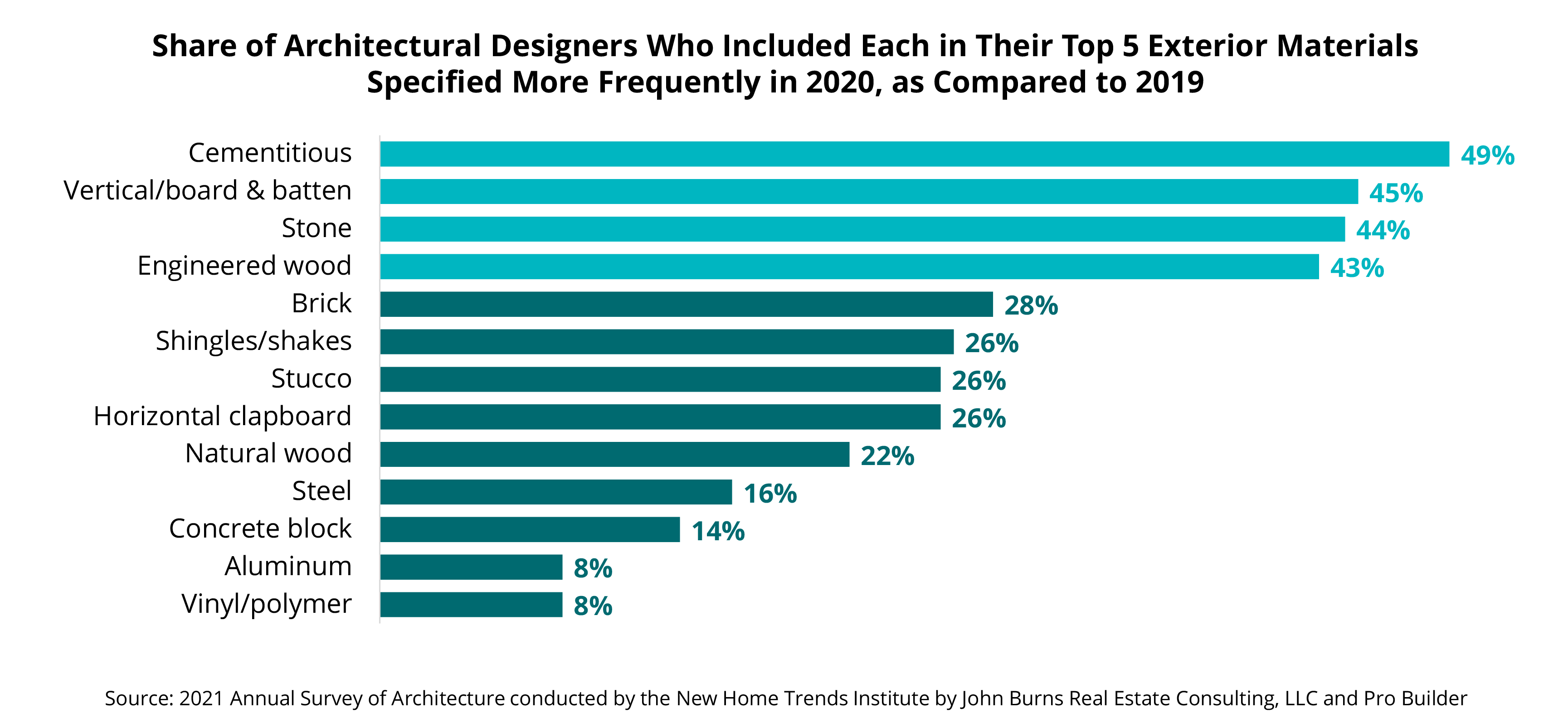
In fact, 40% of architects mixed and matched their external materials more frequently than in years past. The magic number appears to be three, as 54% of architectural designers used three types of exterior siding material for their typical home builds.
THE FINAL DO’S AND DON'TS
Overall, NHTI suggests what you should and shouldn’t be doing to capitalize on these changing trends.
Because cost/value is so important to final design decisions, keep finding ways to reduce cost without sacrificing the look and feel.
Architectural designers should begin looking into modular and prefab options, as it will steer you positively in the direction that investment patterns indicate.
And finally, stop predicting the downfall or end of farmhouse design—it’s not going away anytime soon, according to 58% of designers. Instead, focus holistically on the street scene as opposed to narrowing in on one house style as being “in” or “out.”
For access to the complete Future of Home Design report, and 15 additional exclusive research reports from the New Home Trends Institute (fresh reports released monthly), visit NewHomeTrendsInstitute.com.


